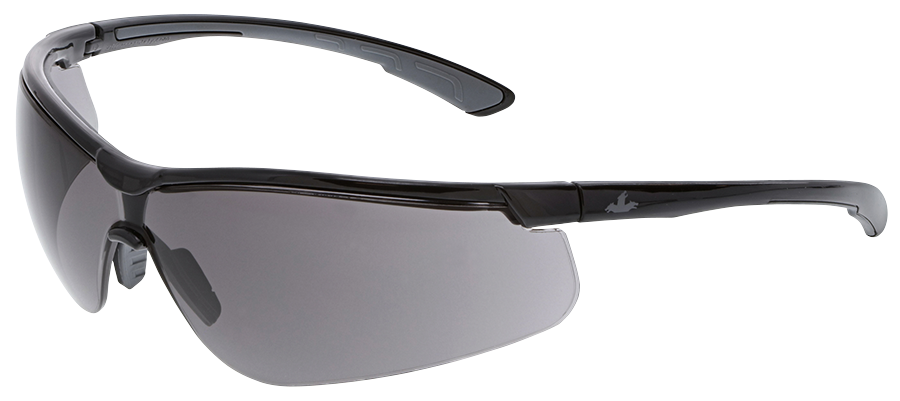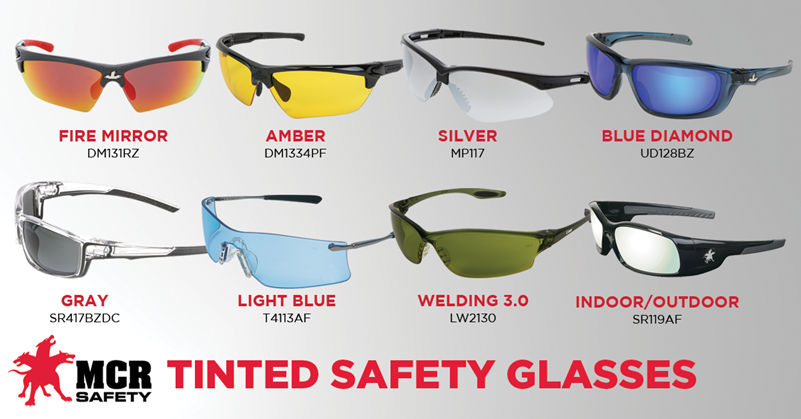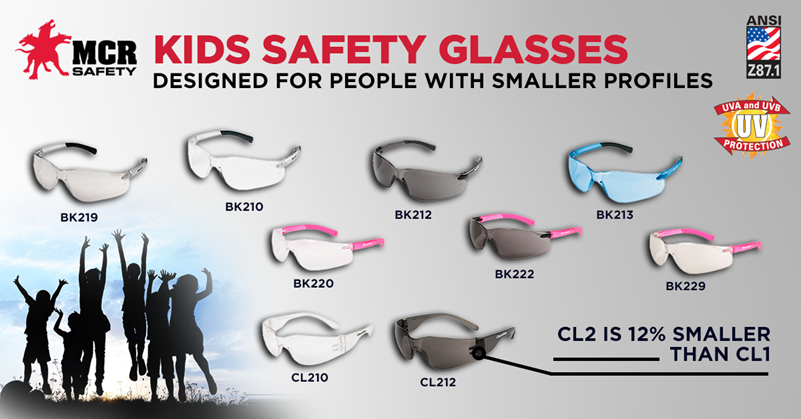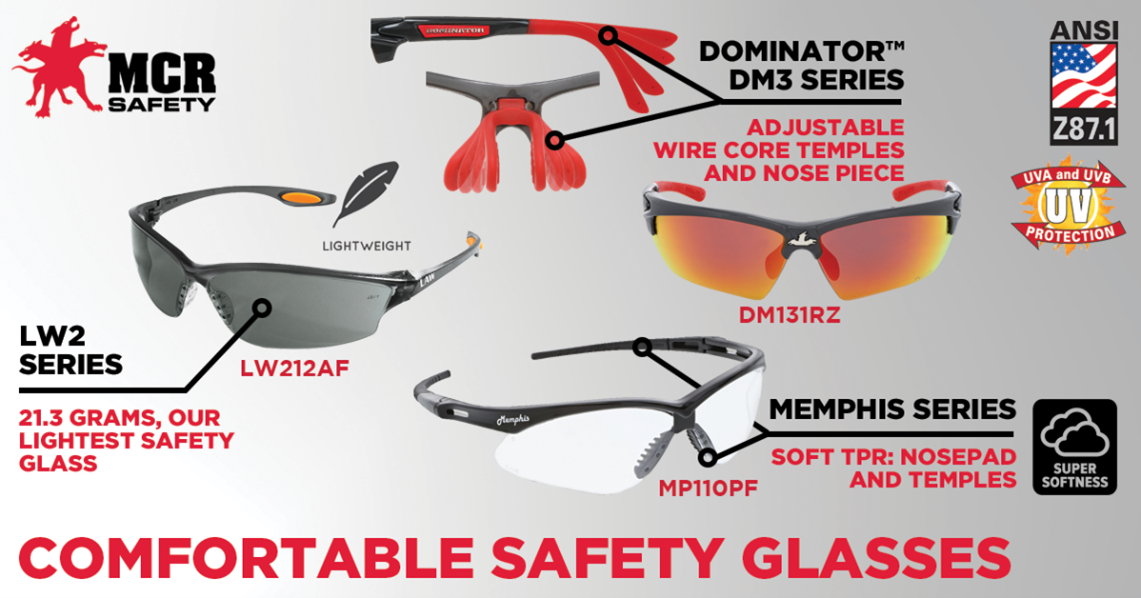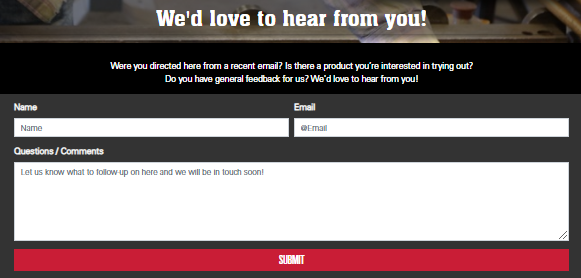01 Jul 07/01/2022
Firework Facts and Safety Fundamentals
Every July 4, Americans celebrate the nation’s birthday! On July 4, 1776, the Continental Congress adopted and ratified the Declaration of Independence, creating a sovereign nation known as the United States of America. This annual summer commemoration is an event that everyone looks forward to, and it marks the beginning of vacations for many. Communities large and small observe the day with festive marching bands, concerts, festivals, get-togethers, grilled food, and fireworks that fill the night sky. The stunning colors and patterns of these fireworks are breathtaking, often the highlight of July 4th celebrations. However, in the fun of celebrating amongst friends and family, many forget how dangerous the festivities can be.
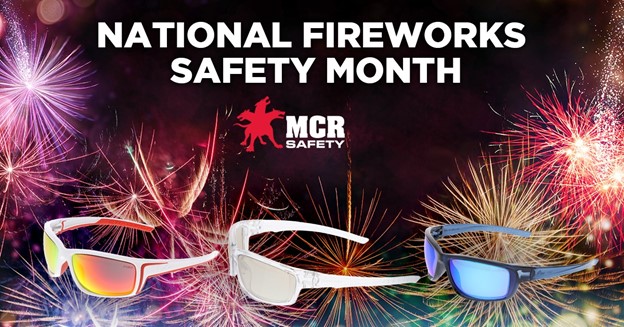
July is Fireworks Safety Month, which makes it the perfect time to remind people of the potential dangers of lighting off fireworks.
According to the Consumer Product Safety Commission (CPSC), there were 15,600 firework-related injuries treated in hospital emergency rooms in 2020, including 18 deaths. Firework hazards are real: within seconds, a person can experience a burn injury that will scar them for a lifetime, or, even worse, they can lose their sight as the result of the improper handling of fireworks. And, if you think it’s only those launching the fireworks in danger, think again. 65% of eye injuries from fireworks involve bystanders.
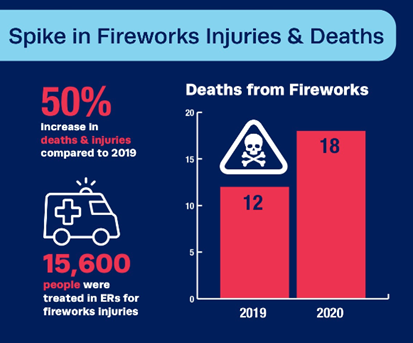
Firework-Related Injuries Doubled from 2019 to 2020
This article will explain how fireworks work, the dangers involved, the most common injuries, fundamental safety rules, and recommendations for celebrating with fireworks more safely.
How do fireworks work?
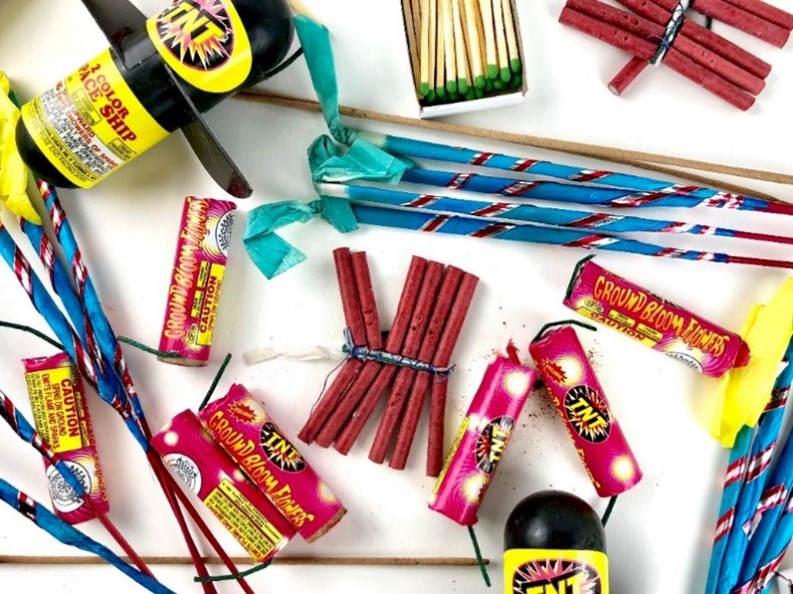
When you see the dark sky light up with sparkle and color on July 4, you may think there is some magic at work. However, it’s just science on display, specifically physics. Fireworks result from chemical reactions involving three essential ingredients: a fuel source, such as a charcoal-based powder; an oxidizer compound, such as potassium nitrate, which produces oxygen; and a color-producing chemical. When these components come into contact, the firework explodes in a burst of color, light, and noise. Aerial fireworks consist of four primary parts:
- A cylindrical tube of paper that contains the string,
- Stars, which contain the necessary chemicals for the explosion to occur,
- A bursting charge that houses black powder intended to launch the firework and, later, ignite the stars, and
- A fuse to ensure the shell bursts.
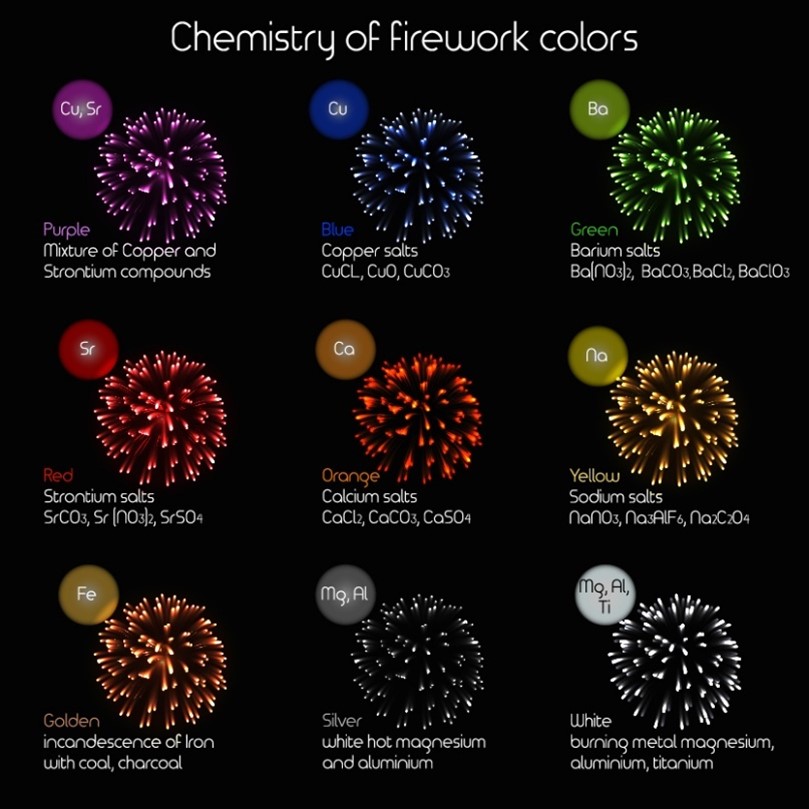
A firework’s color combinations result from changing the chemical make-up in each firework.
When the fuse is lit, the spark moves toward black powder at the bottom of the firework cylinder. When ignited, this results in an explosion that shoots the firework into the air. As the firework ascends, a time-delay fuse moves toward the next compartment of black powder and stars located in a separate chamber. When ignited, the black powder explodes, and the stars burst in a flash of light and color. More advanced fireworks have multiple “breaks” or chambers. Multiple sets of explosions and stars occur as the time-delay fuse moves upward.
And that’s how fireworks explode into the brilliant colors that so many enjoy watching! However, the people who put on fireworks shows face many dangers. Those dangers intensify when fireworks are set off by those untrained in pyrotechnics and not professionals in the field.
Dangers
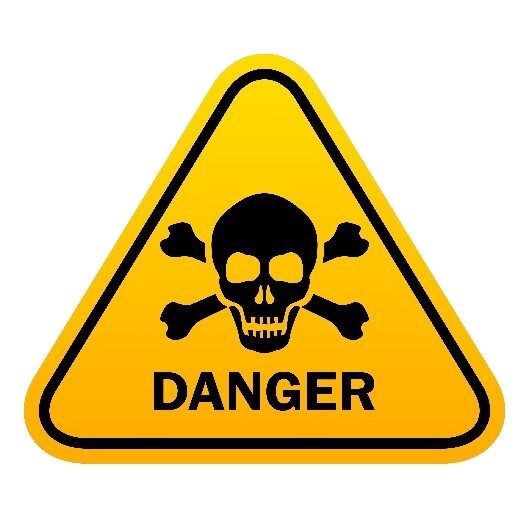
There are several dangers linked to fireworks. In some cases, the firework may explode too close to the ground because the launch tube is unstable, or the stars may ignite too early, while still in one’s hand. In other cases, a person might be holding a firework in their hand or shooting it at someone else, which may cause injury. Burn injuries, eye injuries, blindness, and even limb amputations can result from setting off fireworks.
In the case of dry weather, fireworks pose the added risk of sparking a fire in the grass or nearby trees.
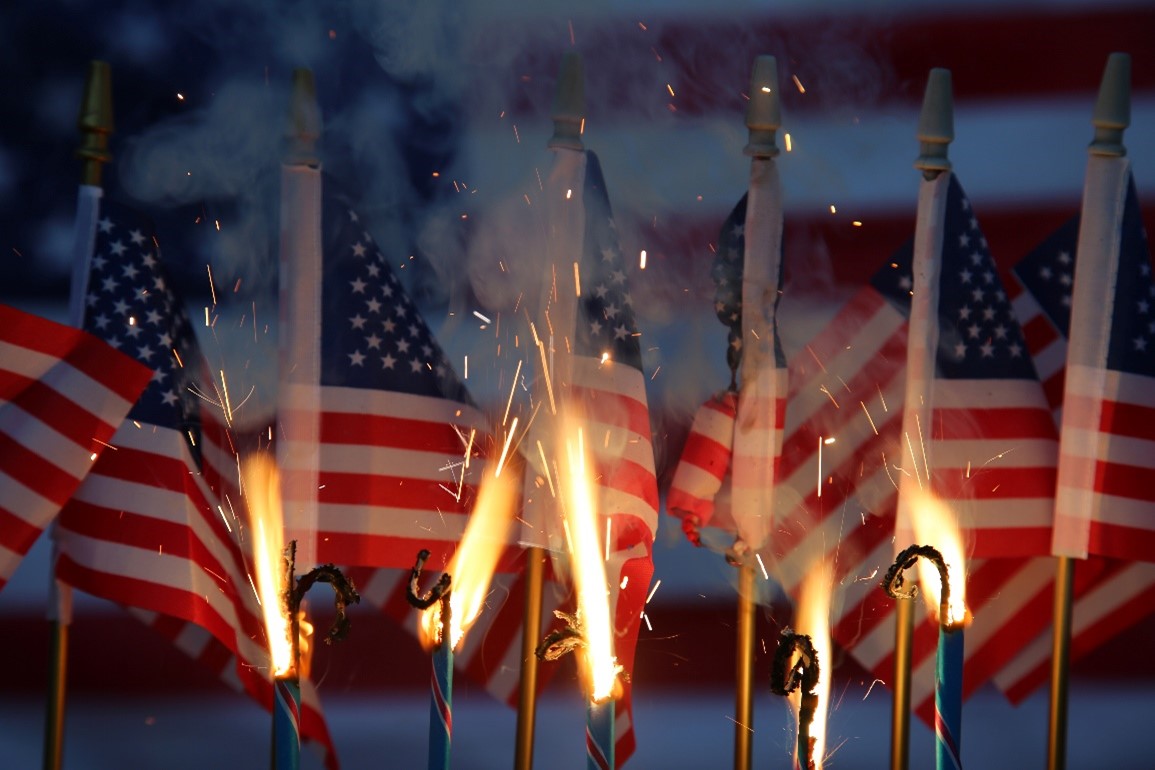
Even seemingly “safe” sparklers burn at about 2,000° Fahrenheit, hot enough to burn wood and glass. Heat burns are one of the primary dangers of all fireworks.
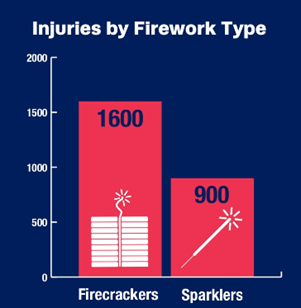
Based on reported emergency room visits, firecrackers and sparklers are the most dangerous types of fireworks.
What makes fireworks even more dangerous is that they can suddenly ignite clothing. Because of this factor, many industrial workers will wear FR clothing at a worksite, as this form of workwear doesn’t ignite and will stop burning once the flame source is removed. While we don’t expect everyone to wear specialized gear during the holiday festivities, we stress caution for whoever stands close to the fun.
Injuries

Firework-related injuries have increased significantly over the last decade as more people purchase fireworks for personal use at home. Children younger than 15 accounts for nearly a third of these injured victims. Most experts suggest that children be provided glow sticks or colored streamers instead of sparklers, which cause the bulk of juvenile injuries.
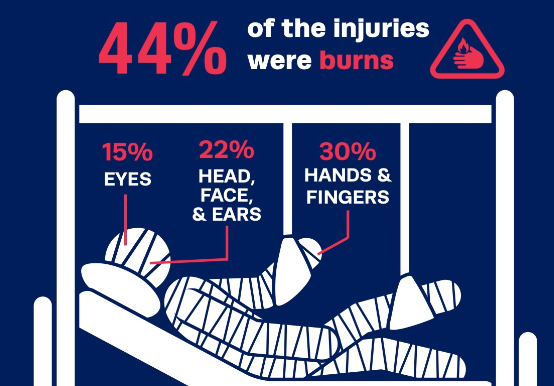
The most common firework-related injuries are burns, making up 44% of injuries. The body parts most regularly injured were hands and fingers, at 30%. The head, face, and ears were the next most commonly hurt, at 22%. Eye injuries accounted for 15% of reported firework-related injuries.
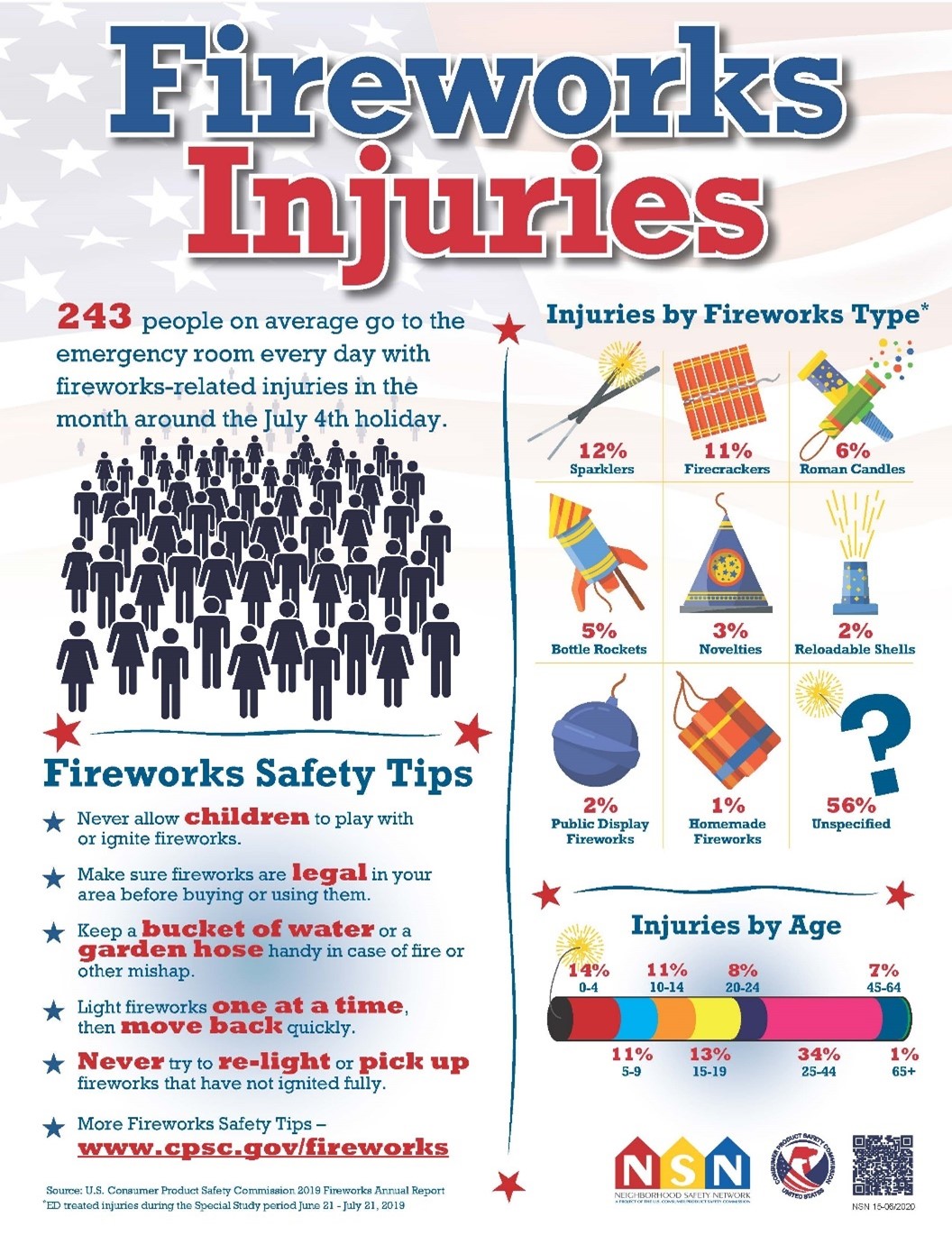
Most firework-related injuries happen to those 45 and younger, with the 25-44 age group sustaining most injuries.
Eye Safety
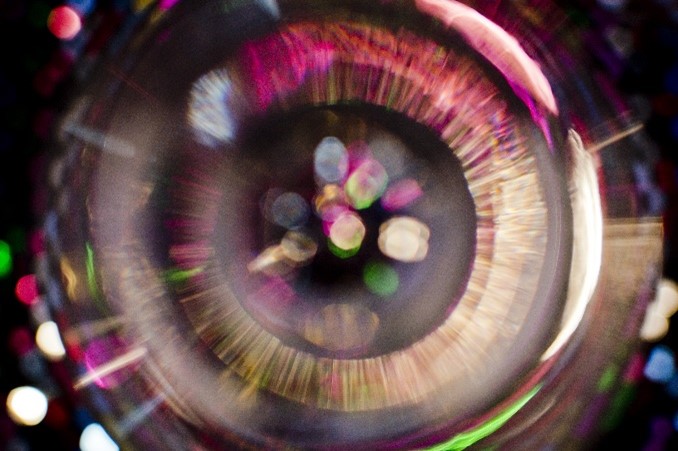
The eyes are particularly at risk when it comes to fireworks. The Consumer Product Safety Commission recently reported that 15% of firework-related injuries involved the eyes. In total, that equates to over 3,400 injuries. When these injuries occur, they often are in the form of heat burns, chemical exposure, contusions, and lacerations. Injuries can involve abrasions, ruptured eyes, and retinal detachment in the harshest circumstances.
When watching a fireworks display, observe from at least 500 feet away and recognize all safety barriers. If you experience an eye injury, it should be viewed as a medical emergency and treated as soon as possible. Do not apply pressure, rinse your eyes, or rub your eyes before seeing a medical professional.
Safety Glasses
Keeping your eyes protected makes perfect sense, especially for those who are lighting and launching fireworks. Eye protection can prevent flying debris, chemicals, and hot objects from damaging your eyes. MCR Safety has been manufacturing protective eyewear since the 1980s, and we have a wide range of styles for users to consider wearing.
Below are some of our favorite styles designed to keep your eyes protected and your vision intact. For our entire selection, be sure to check out our dedicated eye protection catalog.
Clear safety glasses are the top-selling style on the market and are the style most commonly worn at night. However, we also stock numerous tinted lenses for a multitude of occasions.
We make several styles that are small enough to fit kids.
You might as well be comfortable while you stay protected during the festivities.
Don’t let prescription glasses stop you from wearing safety glasses. We make OTG styles!

Fireworks pose a significant risk, and most experts recommend that you leave the firework displays to the professionals. However, if you choose to light fireworks at home, follow these important safety guidelines:
- Always read the directions before using fireworks.
- Keep fireworks away from young children.
- Supervise older children if they handle fireworks.
- Avoid drug and alcohol use while engaging with fireworks.
- Avoid detonating fireworks near flammable material.
- Make use of protective eyewear.
- Only light one firework at a time, and never light them indoors.
- Always light fireworks outdoors, away from the house, cars, or nearby trees.
- Never stand directly over a launch tube.
- Never aim a firework at another person.
- Purchase only legal, locally-approved fireworks; don’t ever consider making homemade fireworks.
- Never light fireworks inside a bucket or container.
- Have a pail of water or fire extinguisher nearby in case of fire.
- Avoid transporting fireworks in one’s pockets.
- No horseplay should be allowed near fireworks.
- Wet unspent fireworks in water before disposing of them properly.
- Only buy legal fireworks.
- Store fireworks in a cool, dry place.

Don’t Forget Pets
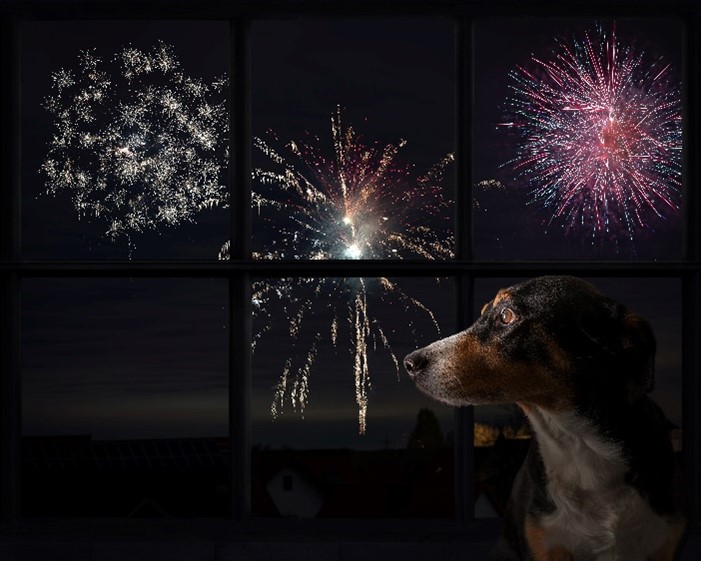
For some pets, particularly dogs and cats with noise-sensitive ears, the sound of fireworks can trigger intense fear responses. Many pets immediately want to hide when they hear fireworks; others will begin barking, shaking, and even losing their bladder due to prolonged stress. What’s essential for owners to remember is that the fear caused by loud, surprising noises has the potential to cause long-lasting harm. Here are some safety ideas to consider for your pets.
- Keep dogs and other pets inside during fireworks shows.
- Close the blinds.
- Have the television or radio playing to help drown out the firework noises.
- Lock your dog in its crate or some other comforting area.
- Give your dog toys or chew treats to occupy its attention.
- Let your dog relieve itself before the display begins to avoid bathroom accidents.
OSHA
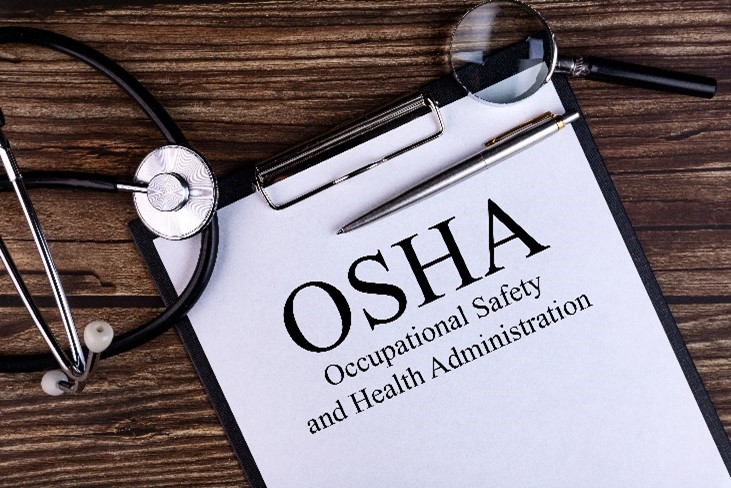
Most people will allow the professionals to deploy the fireworks and create the public’s viewing entertainment on July 4. Professional pyrotechnicians understand the craft and know how to protect themselves from hazards. Pyrotechnics is defined as the skill necessary for making fireworks come to life, from the launching, detonating, and initiating of explosive materials. Those who choose to make this skill their life trade understand it is hazardous. The Occupational Safety and Health Administration (OSHA) urges employers in the fireworks and pyrotechnics business to protect their workers from hazards as they handle and operate fireworks for events.
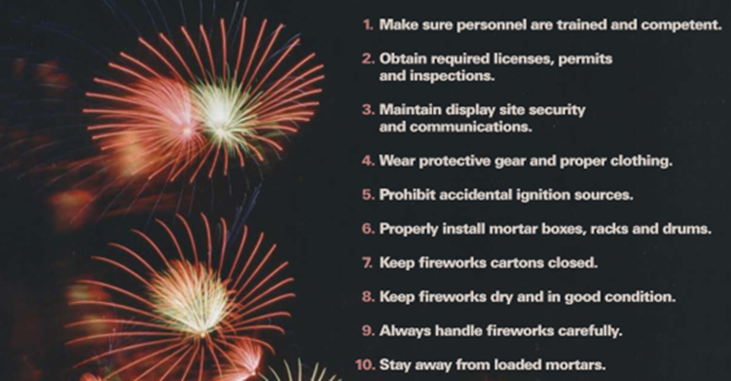
OSHA's Firework Safety Poster
For those working with fireworks as a profession, here are some helpful resources provided by OSHA:
Common Questions

When were fireworks invented?
- Modern fireworks were developed in the 1830s. However, the origins of fireworks can be traced back to 800 AD in Ancient China.
What makes fireworks colorful?
- Metal salts containing metal and non-metal atoms can produce bright colors when they are ignited. The chemical makeup of the salts creates a variety of different colors.
What are fireworks made of?
- Fireworks are composed of several compounds, including gunpowder (for the explosions), aluminum powder (for the flashing lights and bangs), iron filings (for sparks), strontium (red colors), copper (blue), barium (green), and sodium (yellow).
Keeping People Safe During Holiday Fun
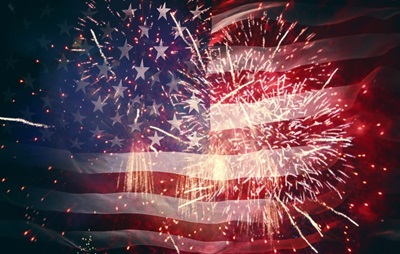
Your safety is our top priority, whether while you are at work or enjoying holiday festivities. We’re not trying to ruin your holiday fun; we only want you to be able to enjoy the future holidays you are blessed to see.
We hope we’ve shared some helpful information and that you will apply some of these tips this upcoming holiday season. Even if you’re a bystander, don’t be fooled into thinking you’re safe from firework-related hazards. At a minimum, be sure to protect yourself by wearing safety glasses, and remember that at MCR Safety, we stand behind our core principle, “We Protect People!”
Click the below image to leave us comments, questions, or any concerns.
For over 45 years, MCR Safety has proven to be a world leader in gloves, glasses, and garments. Whether it's launching fireworks, carrying broken glass, or using dangerous tools at a construction site, we are there providing solutions to workplace hazards. It's all part of our commitment to protect people.
No matter your industry, we have the personal protective equipment you need.
Learn more about MCR Safety by checking out our most recent video. For more information, browse our website, request a catalog, find a distributor, or give us a call at 800-955-6887.
About the Author
Latest Articles





